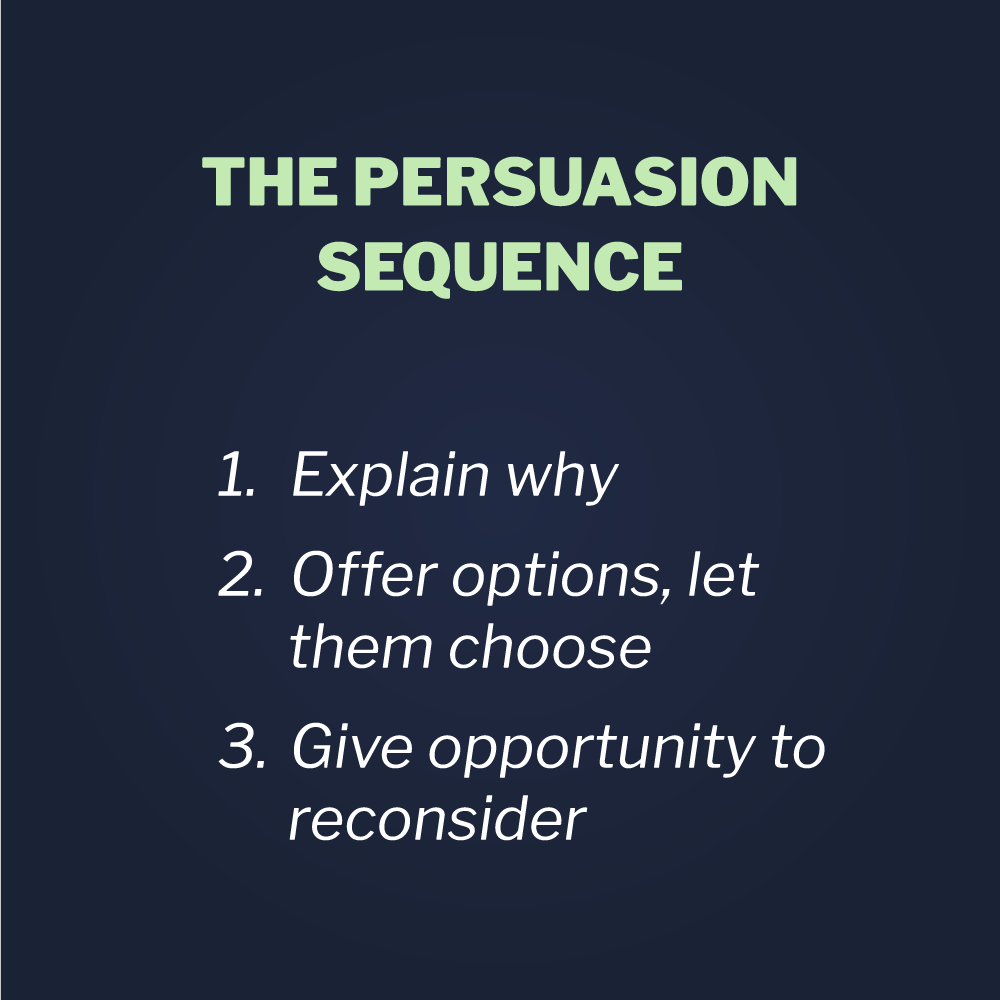Healthcare organizations frequently respond to communication challenges by creating scripts—standardized language that staff are instructed to use in various scenarios. A good example might be a service recovery model, such as LEAD: Listen, Empathize, Apologize, Do something. This pre-fabricated response represents a well-intentioned effort to improve communication and can be useful when making amends for lax service.
However, when faced with genuinely challenging situations—an angry patient, an aggressive family member, or a distressed colleague—these scripts often fail spectacularly, by reinforcing and even rewarding inappropriate and escalating behaviors. Staff members find themselves reciting empty phrases that feel inauthentic and ineffective, sometimes even worsening the situation.
The fundamental limitation of scripting approaches is that effective conflict management isn't about what you say—it's about the dynamic skills you employ in unpredictable, emotionally charged situations. Understanding this distinction between scripts and skills is crucial for organizations seeking to improve safety and communication.
The Limitations of Scripting Approaches
Scripting approaches to conflict communication face several inherent limitations:
1. Scripts Can't Adapt to Dynamic Situations
While an excellent tool for training, rote scripts can fail in practical application when used as a catch-all communication tool. Human conflict is inherently unpredictable. A script prepared for one scenario becomes instantly obsolete when the situation evolves, as most tense interactions do. This leaves staff members stranded between inadequate prepared responses and unprepared improvisation.
2. Scripts Often Sound Inauthentic
When people detect scripted language—which most do easily—they often perceive it as insincere and bureaucratic. This perception undermines trust precisely when it's most needed.
3. Scripts Prioritize Words Over Delivery
Everyone knows it's not what you say, but how you say it. Communication depends less on word choice than on paraverbal and nonverbal elements—tone, volume, pacing, facial expression, gesturing, and body positioning. Scripts address only the verbal component while ignoring these more influential factors.
4. Scripts Create False Confidence
Organizations implement scripts with the belief they've "solved" communication challenges, potentially neglecting the deeper skill development needed for effective conflict management.
5. Scripts Fail Under Stress
During emotional arousal, cognitive processing narrows. Staff members who rely on memorized language often find themselves unable to recall scripts precisely when they're most needed.
The Case for Skill-Based Approaches
Skill-based approaches shift the focus from what to say to how to recognize, analyze, and respond to conflict dynamics. These approaches emphasize:
1. Pattern Recognition
Skilled communicators recognize behavioral patterns that indicate escalation, allowing early intervention before situations become unmanageable.
In practice, this means training staff to identify gateway behaviors—early indicators like raised voice, interrupting, or aggressive body language—that typically precede more serious confrontations.
2. Adaptable Response Frameworks
Rather than predetermined scripts, effective approaches provide flexible frameworks that can be adapted to evolving situations.
For example, the Persuasion Sequence provides a structured progression (explaining why, offering options, giving opportunity to reconsider) that staff can adapt to any situation requiring behavioral change.
3. Delivery Skills
Training that emphasizes how communication is delivered—including tone management, pacing, body positioning, and facial expression—better prepares staff for real-world interactions.
Techniques like "reverse yelling" (deliberately lowering voice volume when others are getting louder) represent skills that work across countless scenarios without requiring memorized language.
4. Continuous Assessment
Skilled communication involves ongoing evaluation and adjustment based on the other person's responses. This dynamic responsiveness can't be captured in static scripts.
Techniques like Beyond Active Listening provide frameworks for this continuous assessment, helping staff gather information, demonstrate understanding, and adapt their approach accordingly.
5. Stress Inoculation
Effective training builds performance under pressure through graduated exposure to stressful scenarios, creating response patterns that remain accessible during real-world confrontations.
Bridging the Gap: From Scripts to Skills
While pure scripting approaches prove inadequate, skillful communication can be systematically developed through several evidence-based methods:
1. Scenario-Based Skill Building
Rather than memorizing language, staff practice responding to realistic scenarios that require them to apply communication principles in context.
Example: A training session might present multiple variations of an angry family scenario, requiring participants to adapt their responses to escalating or de-escalating cues.
2. Micro-Skill Development
Complex communication skills can be broken down into discrete micro-skills that staff practice individually before integrating them into complete interactions.
Example: Staff might practice the specific skill of paraphrasing in multiple contexts before integrating it with other active listening techniques.
3. Video Analysis and Feedback
Reviewing recorded practice scenarios allows staff to observe their own communication patterns and receive specific feedback for improvement.
Example: Participants record de-escalation attempts, then analyze them with trainers to identify both effective techniques and improvement opportunities.
4. Progressive Skill Application
Training introduces communication skills in progressively challenging contexts, building confidence through successful application.
Example: Staff first practice techniques with cooperative role players, then gradually face increasingly resistant scenarios as their skills develop.
5. Peer Coaching Systems
Structured peer observation and feedback reinforce skills learned in formal training sessions.
Example: Designated communication coaches observe real interactions and provide immediate feedback using standardized assessment tools.
Finding Balance: When Structure Helps
While rigid scripts prove problematic, certain structured elements can support skill development:
- Communication frameworks that provide flexible scaffolding rather than rigid wording
- Memory aids that recall key principles rather than exact phrases
- Shared vocabulary that allows teams to discuss communication approaches efficiently
- Decision trees that guide response selection while allowing situational adaptation
- Core questions that help gather critical information in standardized ways
These structured elements support skill application without the limitations of pure scripting approaches.
Implementation: Creating a Skill-Based Communication Culture
Organizations seeking to move beyond scripts toward skill-based approaches should consider these implementation strategies:
1. Audit current scripting approaches to identify where they're inhibiting rather than enhancing communication.
2. Invest in comprehensive skill development that addresses the full spectrum of conflict management—from prevention through de-escalation to safe disengagement.
3. Train supervisors as communication coaches capable of reinforcing skills through observation and feedback.
4. Create practice opportunities in daily operations through simulations, roleplays, and deliberate skill application.
5. Measure skill application rather than script compliance in performance evaluations and quality metrics.
6. Recognize and reward examples of skillful communication, especially in challenging situations.
The distinction between scripts and skills isn't merely academic—it directly impacts patient safety, staff wellbeing, and organizational outcomes. When healthcare organizations invest in developing true communication competence rather than memorized phrases, they create environments where conflicts are managed constructively, escalation is prevented, and both patients and staff experience genuine respect even in the most challenging circumstances.
True skill development requires more investment than script creation, but the return—measured in reduced incidents, improved satisfaction, and enhanced safety—proves its value many times over.








